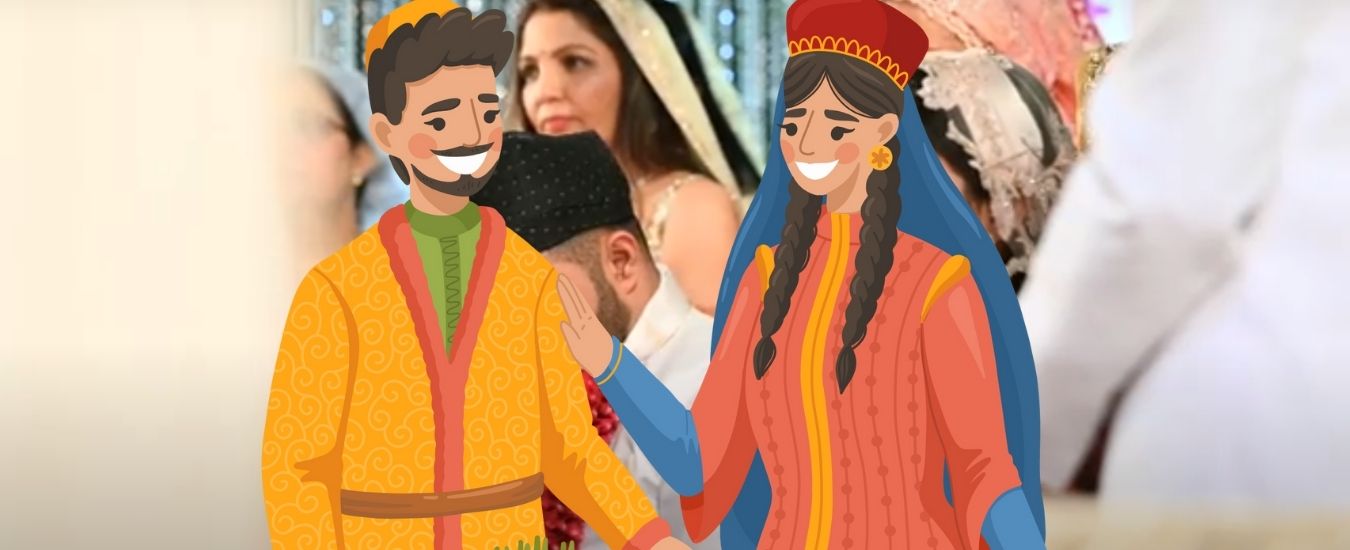A Parsi wedding is a spiritual, cultural, and legal celebration—where faith meets festivity. It’s an experience that connects past and present, tradition and modernity, family and community. Whether it’s the whisper of Zoroastrian prayers, the elegance of a Gara saree, or the aroma of Lagan nu Bhonu, it’s a legacy that lives on through every ritual.
Weddings in India are diverse, colourful, and deeply symbolic. Among them, a Parsi wedding stands out for its elegant simplicity and sacred Zoroastrian rituals. It’s more than just the union of two souls—it’s a harmonious blend of ancient religious traditions, community values, and Persian heritage brought to life.
Who Are the Parsis and What Makes Their Culture Unique?
Parsis are followers of Zoroastrianism, the world’s oldest monotheistic religion founded by Prophet Zarathustra. Fleeing religious persecution in Persia (modern-day Iran), they settled in Gujarat and Mumbai, where they have become an integral part of India’s cultural and industrial landscape.
Zoroastrians hold firm to the tenets of truth (asha), righteousness, and purity, which shape their worldview—including their approach to marriage ceremonies.
The Legal Backbone: Understanding the Parsi Marriage and Divorce Act
Passed in 1936, the Parsi Marriage and Divorce Act governs all matrimonial matters for Parsis in India. Unlike other Indian personal laws like the Hindu Marriage Act or the Special Marriage Act, this law mandates:
- Both partners must be Parsi by birth or through a recognized conversion.
- The ceremony must be conducted by a licensed Mobed (priest) in the presence of two Parsi witnesses.
- The wedding is recognized only after a religious Lagan ceremony, and the couple receives a formal marriage certificate.
This distinct legal framework highlights the role of community-specific law and religious sanctity in Parsi marriages.
Pre-Wedding Rituals: From Engagement to Purification
Rupia Peravanu – The Engagement Exchange
A traditional engagement ritual where silver coins, known as rupia, are exchanged, marking a formal agreement between families.
Madhavsaro – Tree of Life Ceremony
Four days before the wedding, families plant a mango sapling in a pot, symbolizing prosperity and fertility—similar to Indian pre-wedding Vedic rituals.
Adarni – The Gift Exchange
Held a day before the wedding, the groom’s family brings sarees, sweets, and dry fruits to the bride’s home. It is a joyful expression of love and acceptance.
Suprao and Nahan – Ritual Baths
In a purification ceremony called Nahan, the bride and groom take a ritual bath. They also wear Sudreh and Kusti—sacred garments central to Zoroastrian identity.
The Parsi Wedding Day: Rituals, Attire, and Sacred Energy
Venue and Setup
Parsi weddings are often conducted in a bungli (ceremonial hall) next to an Atash Behram (fire temple). The minimalist setup uses white floral decor, signifying purity and simplicity.
Traditional Attire
- The bride wears a white or off-white Gara saree, beautifully embroidered with Chinese and Persian motifs.
- The groom typically wears a white dugli (jacket) and pheta (headgear) paired with the kusti, a sacred thread worn over the Sudreh.
Achumichu – Ritual of Warding Off Evil
Coconut, rice, and dates are passed around the couple to protect them from negative energies, akin to purification rituals in other Indian cultures.
The Lagan: Sacred Vows in the Presence of the Divine
During the Lagan, the couple is seated with a curtain between them. A Mobed recites Zoroastrian prayers, and the couple throws rice over each other—whoever does it first is considered dominant in the household! The wedding is spiritually binding, rooted in the values of truth and harmony.
Post-Wedding Celebrations: Food, Community, and New Beginnings
Lagan nu Bhonu – The Feast
Guests indulge in a sumptuous Parsi meal featuring Patra ni Macchi, Sali Boti, Pulao-Dal, and Lagan nu Custard. Food is an integral part of the Parsi celebration.
Pag Dhovanu – Bride’s Entry
In this charming tradition, the bride’s feet are washed by the groom’s mother, marking her graceful welcome into the new family.
Modern Interpretations and Global Influence
Fusion and Interfaith Weddings
With many Parsi youth marrying outside the community, fusion weddings blend Zoroastrian rituals with other cultural practices. However, under the current Parsi Marriage and Divorce Act, interfaith marriages aren’t recognized unless conversion occurs.
Evolving with the Times
Contemporary Parsis, especially in the diaspora, opt for minimalist weddings, eco-friendly ceremonies, and even destination weddings—while retaining core traditions like Sudreh-Kusti rituals and prayer recitations.
Community and Spiritual Significance
Zoroastrianism emphasizes community over individuality, and weddings are community-centric. From Mobeds to Parsi Panchayat leaders, everyone plays a part. Fire, even if not physically present at every wedding, remains a spiritual symbol of divine energy and purity.
FAQs
Does Parsi marriage come under the Hindu Marriage Act?
No, Parsis follow the Parsi Marriage and Divorce Act of 1936, which is entirely separate.
Can a non-Parsi marry a Parsi under this law?
Only if the non-Parsi converts follow the community’s recognized process. Otherwise, such unions may be registered under the Special Marriage Act.
How many types of marriage exist in the Parsi religion?
There is only one religiously recognized ceremony—Lagan, overseen by a Mobed.
Is fire present during all Parsi weddings?
Not always, but its spiritual symbolism remains central.
Do Parsis allow incestuous marriages?
No. Incestuous marriages are strictly prohibited by both religious law and community norms.
